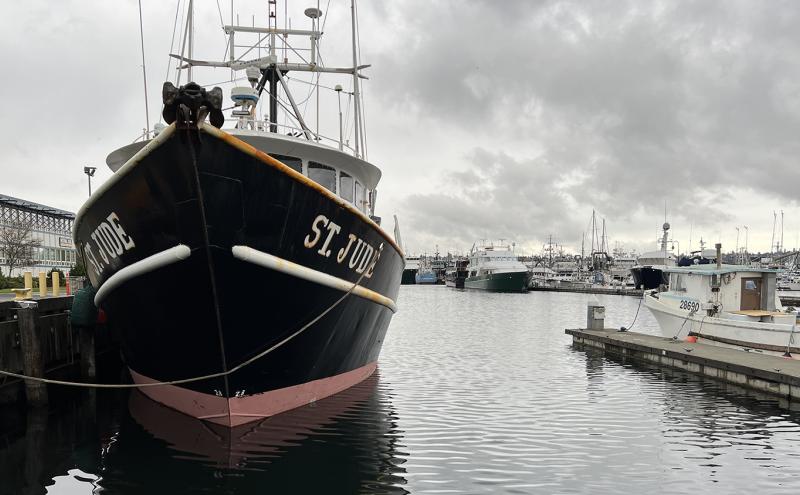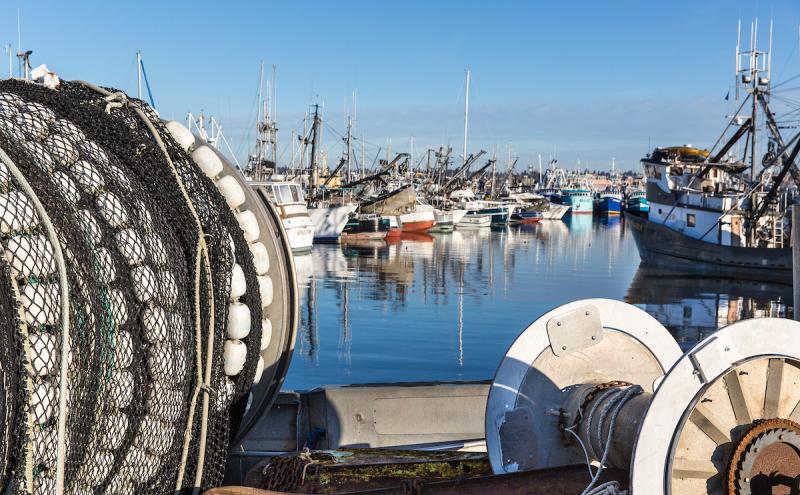This is the second of a two part installment on the adventures of the St. Jude fishing vessel and the captain and crew's experience in the commercial fishing industry in and out of Seattle. Read part 1: The Adventure of an Unconventional Career.
Joe Malley has reeled in a lot of different fish in his over 40-year commercial fishing career, but tuna has a special place in his heart. And on his plate. “When I'm fishing halibut, the last thing I want to see on my plate is halibut,” he said. “If I'm fishing salmon, I don't want even a beautiful King salmon. But when I'm fishing tuna, you can serve it to me all day, every day.”
Tuna doesn't have a big statement to make, Malley said. “It's the perfect American fish – odorless, colorless, and tasteless. And tuna can be incorporated into dishes in so many ways; for instance, you can stir fry it just like chicken.”
For Malley, his wife Joyce, and their five-person crew, tuna is a way of life. The St. Jude crew spends 12 months a year on a quest for albacore tuna — from the North Pacific in summer to the South Pacific in fall. When they aren’t fishing off their 95-foot-troller, the St. Jude, or in transit from one fishing destination to the next, the Malleys call Fishermen’s Terminal (a Port property) home.
The Malleys and their crew are part of a commercial fishing legacy that has fed the world and economies of the Pacific Northwest and state of Alaska for more than 100 years. The Pacific Northwest region supplies 13% of the total U.S. commercial fisheries harvest by value. Commercial fishing activities at the Port of Seattle generated more than $671.2 million in business output in 2017 and supported 7,200 jobs.
Community connections
The St. Jude crew catches the tuna off the boat and minimally processes the fish on board before freezing and canning or filleting the high-quality product for later distribution.
Malley sells his product both to tuna brands and also around his Seattle home when he’s not on the water. He sells to farmers markets, local restaurants, and local Whole Foods Market stores. During the pandemic, he returned to the tradition of selling tuna to the public off the dock while moored at Fishermen’s Terminal, which was once a common practice.“That interaction with the public is so rewarding, and that has been a big deal for us for many years now,” he said.
Years ago, the Malleys approached a local Whole Foods Market to convince them to carry their canned and smoked tuna. The manager of the Roosevelt Whole Foods Market in Seattle gave then a shot and they have thrived there ever since. “We did so many demos. But it worked. Now our products are in about 150 local grocery stores. And even though it's pricey, which I regret, it sells itself.”
Over the years the St. Jude’s tuna has moved into the fine dining space as customers learn to appreciate tuna’s versatility. “I think the tastes of the community have matured with respect to our albacore,” Malley said. “One of the sushi chefs I work with told me years and years ago, among his Western clientele, albacore was number one.”
Sustainable seafood
Malley said his fishing operation is sustainable because it is low impact, produces a high quality product, and is often sold directly to the consumer. “In terms of the volume of catch, on the best day I ever had albacore fishing, we caught 1,560 fish by 2:00 p.m. Well, that happened once. For every day like that there's 40 days where we catch between 40 and 120 fish.”
The St. Jude crew catches fish through trolling, a process where one or more fishing lines are baited with lures or baitfish, and drawn through the water behind the boat moving slowly. This method of fishing has a much smaller impact than those dragging a big net and loading 80 tons of fish into the boat in two and a half hours.
Malley’s definition of sustainability also includes ensuring a high-quality product for his customers. “If you only have so many fish to live off of, I think it's the responsibility of the fisherman to ensure that the catch they harvest is optimized into the best product possible.”
Malley said buyers appreciate the sense of community that comes with interactions with fishermen and learning about where their fish comes from. “Selling off the dock and at farmers markets is how we get to know people and people get to know us and I think there's enough enlightened people in the Seattle area, particularly, who appreciate things like sustainability,” he said.
An understated fish
Malley shares suggestions on how to enjoy this nutritious source of protein — it’s high in essential vitamins and minerals such as B12 and selenium — through his interactions with customers, and on the St. Jude blog.
“You can sear it like tenderloin, slice it nicely, arrange it on a plate, and that's your meal. I love it seared. When you sear albacore you can be so creative with it. You can give it a Mediterranean flavor; or you can give it a barbecue flavor. You can bury it in barbecue sauce if you choose to,” he said. “Or my other favorite is a sushi-style dish. I take a slab of albacore and slice it and then I cook up some sushi rice. I make little finger shaped piles of sushi rice and put a little dab of wasabi in the middle. Then drape the strip of meat across the top and just dip it in a side of wasabi dip.”
Need some other ideas? Dive into this recipe for Grilled Northwest Albacore Niçoise Salad by Chef Greg Atkinson of Restaurant Marché on Bainbridge Island.
- Check out St. Jude’s blog for more ideas on how to cook with tuna→








